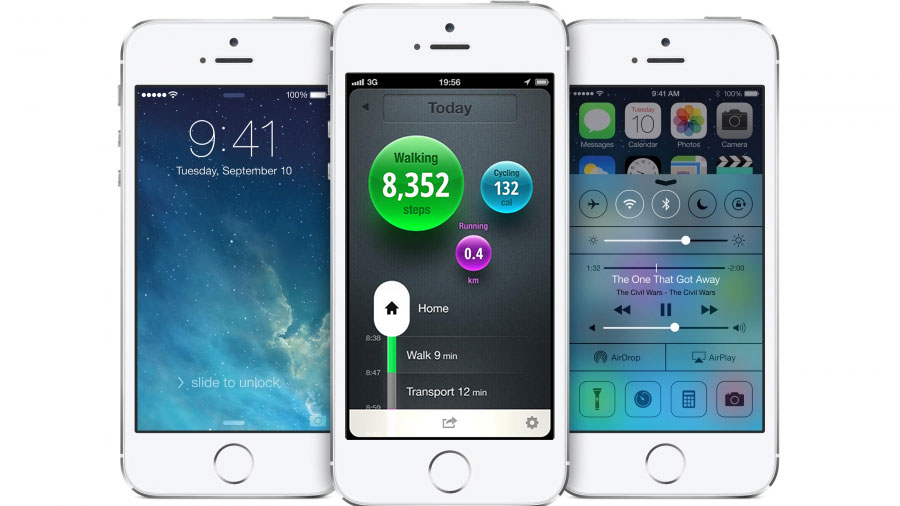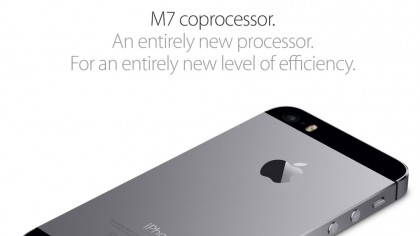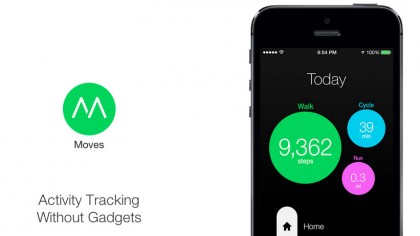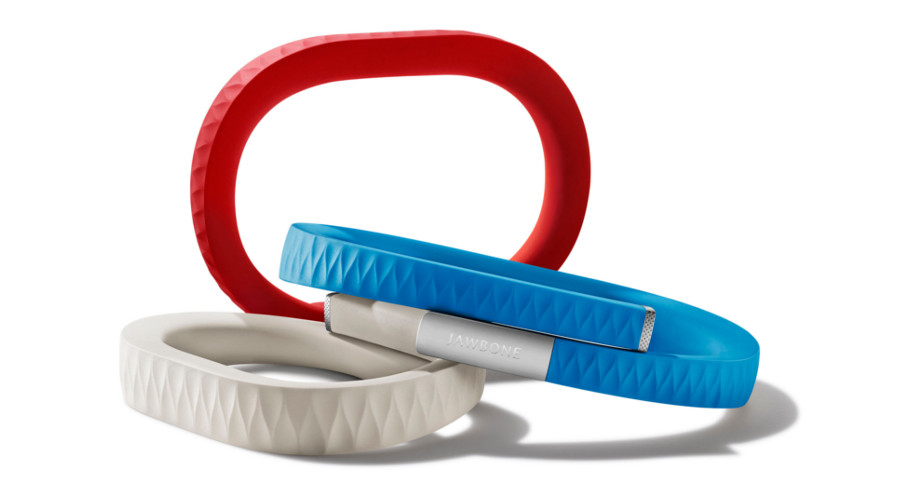iPhone 5S' M7 chip is a 'big step in the right direction'

The prospect of actually knowing just what activity you are doing on a day to day basis is clearly an attractive one, with the likes of Nike and Jawbone's wristbands making wearable tech a familiar sight.
But developer ProtoGeo is hoping that its Moves App and the new M7 Apple processor can rid you of the unsightly bands and make your phone the go-to fitness tracker.
You might not have heard too much about the M7 processor, but the addition of this chip in the iPhone 5S, iPad Air and iPad mini 2 with Retina could make a fundamental difference to your device.
In simple terms, the M7 coprocessor works alongside the much-discussed A7 processor that is the beating heart of your Apple device and takes over running the accelerometers, gyroscope and compass sensors in sleep mode - essentially the bits that monitor your movement - and recording that data.
Crucially it does this constantly while being significantly less of a drain on your battery than you'd find if the main processor was doing the work.
Moves up

The arrival of the M7 is something of a mixed blessing for ProtoGeo; the company previously dedicated a huge amount of time to develop the Moves app to track your daily movement before the M7 technology arrived.
But ProtoGeo CEO Sampo Karjalainen insists that he is thrilled by the arrival of the new technology ahead of the launch of an overhauled Moves app for iOS 7 this week.
Sign up for breaking news, reviews, opinion, top tech deals, and more.
"What Apple has done with the M7 is definitely the right approach," he told TechRadar. "By using a second processor it allows the main processor to go to sleep which obviously helps greatly with battery consumption.
"With Moves we want to monitor your very first activity of the day and then through the whole day - we launched in January of this year on iPhone after spending a long time developing our own algorithms for collecting location and movement but minimising battery drain.
"But when the main processor is awake it still drains the battery and approaches the level where to [keep the app on and] make battery life acceptable to many users was still a problem."
So the arrival of the M7 makes the Moves app fundamentally more useful - simply because you can afford to use the app as it was designed without entirely killing your battery life.
The data generated and stored by the M7 for seven days will obviously prove to be a boon for not only Moves but any app that wants to use this information, but Karjalainen believes the hard work done before the M7 should still give his app the edge.
Not a complete solution

"The problem with the M7 is that it's not a complete solution - so it will recognise walking but not recognise that you are cycling which we have recorded from very beginning," he adds.
"What we have done is built a hybrid of the good bits of the M7 and our own technology. Putting these together means you get both our features but also the battery life saving."
But just how much battery life does the M7 chip save, and does it make an always-on app practical?
"It's difficult to stick a single number on it, because obviously things like network strength and the way people use their phone affects things, but our tests suggest that the saving is in the region of 40 per cent in the iPhone 5S [over the iPhone 5]," says Karjalainen.
Karjalainen, who also cofounded Habbo Hotel, admits that having to make an App for devices that do not have the M7 adds a layer of complexity, although he believes the iOS 7 version of the App does still make it viable on the other devices.
"There's a great battery saving mode for the other iPhone models which does make some compromises," he says.
Band products?

The obvious conclusion you may arrive at is that if you are going to use a separate processor to track movement, why not use a separate device like a fitness band or smartwatch?
Karjalainen believes discrete technology is a valid option, but not necessarily good enough to be attractive to the mainstream user.
"When we look at something like the FuelBand from Jawbone, the gadget's good if you have the motivation to charge it and synch it every day.
"But that involves quite a big behaviour change just to track your activity so we think that it is smartphones that provide a more mainstream platform that people can keep on using which doesn't require a big change in motivation.
"I would say that this can change and if people like Apple and Google develop wearable platforms that are hopefully more multipurpose and are part of our daily life then those platforms make a great deal of sense for movement monitoring."
Karjalainen passionately believes that having everybody monitoring their activity will bring widespread health benefits, and that the M7 and similar technology on Android devices represent a real shift in mobile use.
Moves is likely to be joined by a slew of similar apps in the coming weeks and months, and devices that are capable of tracking our movement all the time might sound like an Orwellian nightmare but also represents a significant step in tech evolution.
- Want to know more about Apple's flagship? Check out our iPhone 5S review

Patrick Goss is the ex-Editor in Chief of TechRadar. Patrick was a passionate and experienced journalist, and he has been lucky enough to work on some of the finest online properties on the planet, building audiences everywhere and establishing himself at the forefront of digital content. After a long stint as the boss at TechRadar, Patrick has now moved on to a role with Apple, where he is the Managing Editor for the App Store in the UK.